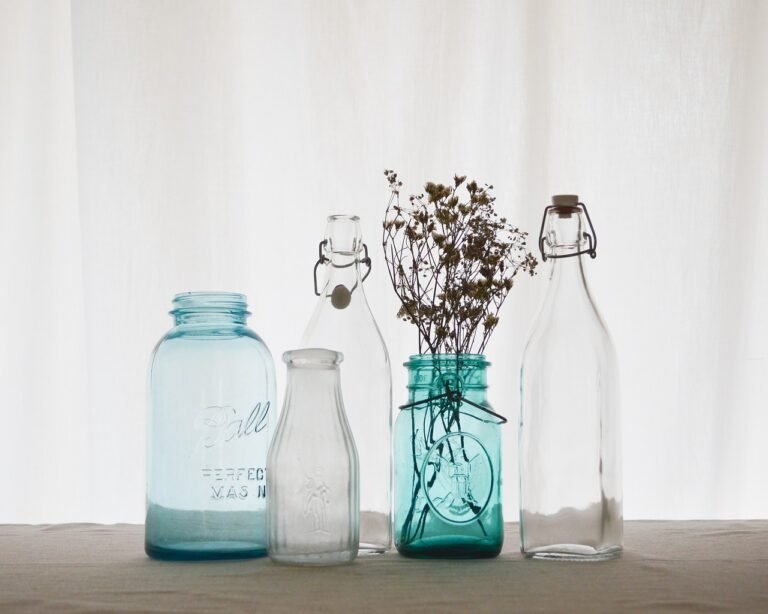All You Need to Know about Kiln Temperatures in Pottery
All types of clays mature at specific temperatures and although the firing stage needs less creativity and artistic spirit, it requires a certain level of knowledge. In this process, any mistake can lead to an unsatisfactory outcome. But, what do you need to know about Kiln temperatures in pottery to avoid flows in ceramic durability or color?
In most scenarios, a kiln should be firing at a temperature between 2100℉ and 2400 ℉ (1162-1240℃). This range of temperature is optimal for common and widely used industrial ceramic, including stoneware and earthenware. However, some materials, like porcelain fire at higher temperatures.
In this article, I will discuss all the details you need to know about kiln temperatures in pottery. I will speak about the cost of building or purchasing a kiln for pottery, how to run the kiln, and other important features all potters need to know.
How Hot is a Kiln for Pottery?
Historically, kilns were invented to reach higher temperatures and contain heat using less fuel. Clay transforms into pottery approximately at 1000℉. Heat extracts water molecules from clay and creates a substance that does not dissolve in water.
As I have discussed above, a pottery kiln normally can get somewhere between 2100 and 2300 °F, although the required temperature varies from the material you are using. It is true that there are some differences, the range of temperature in the kiln is quite narrow. Almost all types of clay can be fired at 2400 F or below.
The temperature of your kiln will depend on the type of clay you decide to use. To make it simple, I will divide clay types into several main categories.
The first category you should know about is the low-fire clays. As the name suggests, low-fire clays, such as earthenware can be successfully fired at lower temperatures. On average, optimal firing temperature for these clay varies between 1740 to 2020 °F.
Mid-range clays, such as stoneware, require higher firing temperatures, ranging between 2120 and 2270 °F. The third category is called high-fire stoneware, which needs to be fired at higher temperatures. When working with this material, you will need to reach 2300-2330°F in your kiln.
High-fire porcelain is yet another material I will talk about separately. Porcelain is normally fired between 2380 and 2460 °F.
How Do You Build A Wood-fired Pottery Kiln?
Building your own kiln at home can be an amazing way to fire your pottery, without spending a huge amount of money or renting a separate space for firing. Keep in mind that if not constructed correctly, it can be a safety hazard for your house and children.
When considering the placement of your homemade kiln, make sure that you follow all safety instructions. This is especially important when building a Wooden-fired kiln.
For construction, you will need red bricks and an old wood stove in good working order. Red bricks are the perfect material for kiln, as they are made of clay. Due to this reason, your constructions will be able to withstand high heat temperatures.
To make a kiln, you should place red bricks one on top of the other. For temporary construction, you can proceed without using any mortar. Place the firebox, an area where the wood is kept, below and the ware chamber above it.
After you have completed this process, place pots inside the ware chamber. Then, put more breaks on top to create a roof. You will also need to build a chimney at one end, to ensure good ventilation.

How Much Does A Kiln For Pottery Cost?
The overall cost of constructing and using a kiln depends on a wide range of factors. Prices of kilns may range anywhere from 300 USD to a couple of thousands of dollars. Below, I will discuss several major factors that affect the costs of firing a kiln.
The first factor I will discuss is the cost of electricity. Rates of household electricity vary depending on where you live. In addition, you should know that the kiln’s power consumption largely depends on the size and design of the kiln.
Another important factor is the frequency of firing the kiln. Before buying or constructing a kiln, determine the frequency of usage. If you are going to fire your kiln every day, the costs of running it will be higher than if you plan to use it once or twice per week.
If you are a more experienced potter and thinking about setting up your very own studio, in this article you will find everything you need for a start.
What are Dangerous Gasses From Kiln?
Toxic gasses are one of the greatest hazards to potters. Frequent exposure to toxic fumes can cause serious health problems. Often, symptoms of chronic inhalation cause symptoms that are hard to diagnose.
Gasses emitted while firing the kiln mix rapidly with air. It is therefore of significant importance for all indoor kilns to have a good ventilation system.
Sulfur dioxide is the most widespread air pollution from pottery firing. This substance is known as the main cause of chronic bronchitis. Many unrefined clays contain sulfurs that produce fumes of sulfur dioxide when firing.
Another dangerous gas I will speak about is Carbon Monoxide. It is especially vicious because it is almost impossible to notice. Carbon Monoxide has no color or smell. Chronic exposure to this substance may cause various blood disorders and in some cases may lead to brain damage.
Ozone is another toxic gas that represents a danger to potters. It is known to exacerbate respiratory conditions such as asthma and bronchitis. It leads to severe damage of lung cells and a negative impact on the immune system. It is created during electric kiln firing during oxidation.






